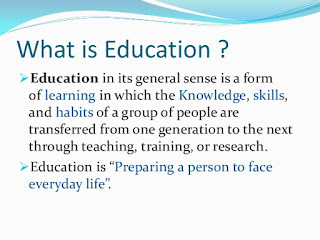The role of government in Education
Education is a highly regulated industry. The regulation covers the age at which you start school, the length of time you spend in the classroom, the number of days you spend in school in any given year and the core subjects you study. Additionally, the training teachers receive and the requirements of that training are centrally controlled. Teachers and schools are further controlled by a standardized assessment process that not only checks the progress of the child but also the teacher of their class and the school they attend.
The premise of this is that those companies who set their prices too high or do not offer an acceptable level of service will lose out to the competition. How successful this approach has been to the consumer is certainly debatable but this neo-liberalist ideology of improvement through competition remains at the heart of New Labour’s political strategy. It is clear that it is not possible, at this current time, to fully deregulate the education industry and allow a range of providers to manage and control state schools and universities in a traditional competitive environment, so competition in education needs to take other forms. Each academic year a league table of schools is produced.
These published league tables are based on the results of the Key Stage Standardized Assessment Tests (SATs) that children take at set times throughout their education. If we take the example of the Key Stage 2 SATs, which children take in their final year of primary school, we can begin to question both the purpose of the tests and the use that they are put to. Theoretically, parents can choose the school that their child attends. However, in reality, their choice is determined by their location and ability to manipulate the system. This issue is discussed in more detail in Chapter 4, ‘An Introduction to Contemporary Educational Policy’.
The role of government in Education
At the heart of the political interference that education is subjected to is the idea of improvement in public services through competition. In many previously nationalized industries such as the utility gas, telecommunications, water and electricity, this has resulted in de-regulation, allowing other providers to offer similar services with the aim of reducing prices and improving the service to the consumer.The premise of this is that those companies who set their prices too high or do not offer an acceptable level of service will lose out to the competition. How successful this approach has been to the consumer is certainly debatable but this neo-liberalist ideology of improvement through competition remains at the heart of New Labour’s political strategy. It is clear that it is not possible, at this current time, to fully deregulate the education industry and allow a range of providers to manage and control state schools and universities in a traditional competitive environment, so competition in education needs to take other forms. Each academic year a league table of schools is produced.
These published league tables are based on the results of the Key Stage Standardized Assessment Tests (SATs) that children take at set times throughout their education. If we take the example of the Key Stage 2 SATs, which children take in their final year of primary school, we can begin to question both the purpose of the tests and the use that they are put to. Theoretically, parents can choose the school that their child attends. However, in reality, their choice is determined by their location and ability to manipulate the system. This issue is discussed in more detail in Chapter 4, ‘An Introduction to Contemporary Educational Policy’.

Comments
Post a Comment